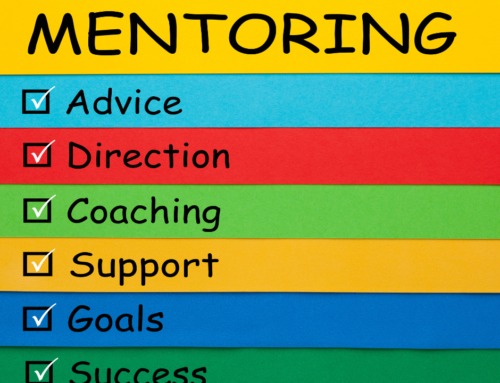Living Leadership – “Growing Yourself” To Where You Want To Be
We are living in some perilous moments that stretch our abilities to think clearly, act responsibly, and manage our psychology. Exceptional leadership, living leadership, is often borne out of times like this.
How It All Started For Me
My whole journey started after I found myself in a desperate place many years ago. I remember wandering through the Self-Help bookshelves of a Chapters bookstore sipping a Starbucks coffee.
In what feels now like a lifetime ago, I waited (hoped) for something meaningful to catch my eye.
A book with an odd blue spine called out to me. The title of the book was (is) Your Best Year Yet.
Right at that moment, I needed the best year yet, so I pulled it off the shelf, found a corner chair, and began reading. I read, and I read until I had read just about the entire book. And then I bought it.
Jinny Ditzler shared something in that book that has become the foundation of my life since then.
I suggest that it has to do with evaluating where you are now.
Deciding Where You Want To Go
Living leadership starts when you decide where it is you want to go. What you want to change. What life you want to lead. Once you do that, it’s a roadmap, a plan you create for how you are going to get there.
It sounds so simple and straightforward – but for many, many people, it is not.
Often you need a mentor or a guide, a person in your corner to encourage you.
Right at that moment, Jinny was my guide.
She instructed me to get a journal.
Start Writing It Down
For one of the first journal entries, Ditzler asks you to rank on a scale of 1 to 10, where you rate yourself in each area of your life that you think is essential.
For me – Father, Son, Brother, Husband, Employee, ETC.
The author then poses the question; where do you want to be in each of those areas of your life one year from today?
The Game Plan
What are you willing to do in each area to get where you want to go?
Note the importance of the word “do”. This step is more than wishing, hoping or making excuses for why you can’t. This is the ‘to do” column. It will take action on your part.
Once you have your action steps, it’s time to break those steps into 12 monthly steps. Go further, cut it into 52 weekly steps. Jinny, my guide, encouraged me to carve out a chunk of time each week and called it my GOLD TIME.
Make Time for Gold Time
In that GOLD TIME each week, write down in your journal, a status report of your life as it appears at that moment.
Document your progress as you take actions that move the needle of your growth forward. You will want to record progress in each of the ten areas you initially identified as valuable to you.
It’s About the Little Things
Massive change is not how we measure your progress. It’s the little things, the small victories, one day after the next that begin to form your new picture of life. When you start to put them all together, week after week, month after month – consistently:
The tiny steps you take will have a massive impact on your life.
The 1% Rule
I know now that this process is called the 1% Rule – or the Aggregation of Marginal Gains.
It worked for me, and it will work for you – wherever you find yourself right now.
Here is a compelling story to reinforce the importance of steady progress for you, not racing off to the finish line, but systematic, consistent improvement, nonetheless.
It is called The 20 Mile March.
Growing up in England, I learned about the British explorer, Captain Robert Falcon Scott, who led two expeditions to the Antarctic.
On his second expedition, in January 1912, he was in direct competition with a Norwegian explorer, Roald Amundsen. Both were racing to be the first person to reach the South Pole.
The journey there and back was roughly 1,400 miles, equivalent to a round-trip from New York City to Chicago.
While both teams traveled the same distance through extremely harsh weather conditions, each team took an entirely different approach to the journey.
Scott’s team would walk as far as possible on the good weather days and then rest up on the bad days to conserve energy.
Conversely, Amundsen’s team adhered to a strict regimen of consistent progress by walking 20 miles every day, no matter what the weather. While on good days, Amundsen’s team was very capable of walking further, Amundsen was adamant that they walk no more than 20 miles each day to conserve their energy.
Which one succeeded?
The team that took consistent action.
Consistency – The Art of Daily Action
By taking consistent action every day with the 20-Mile March rather than spurts of inconsistent activity, they made it first to the South Pole and on schedule.
Scott’s team that only traveled on good days, ended up dying on the journey.
Your Call to Action
Your call to action this week is for you to get a journal and start your version of GOLD TIME. Map out those 1% steps you need to take to move forward.
In last week’s blog, I spoke about 12 Resiliency Factors. We discussed the feelings and behaviors that are designed to help you be more resilient, something we could all do with more of right now.
That list would be an excellent place to start when planning your GOLD TIME list.






